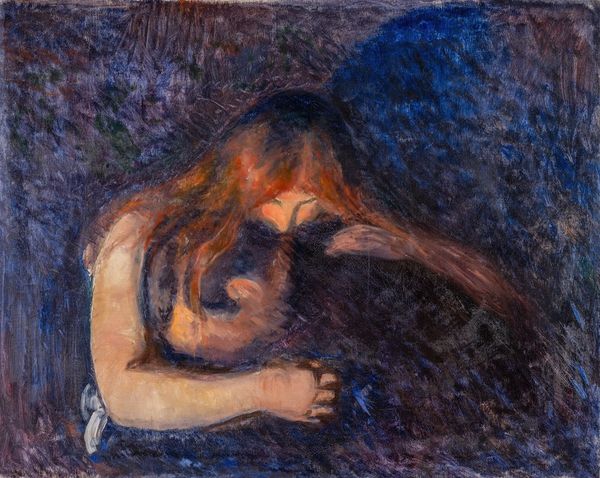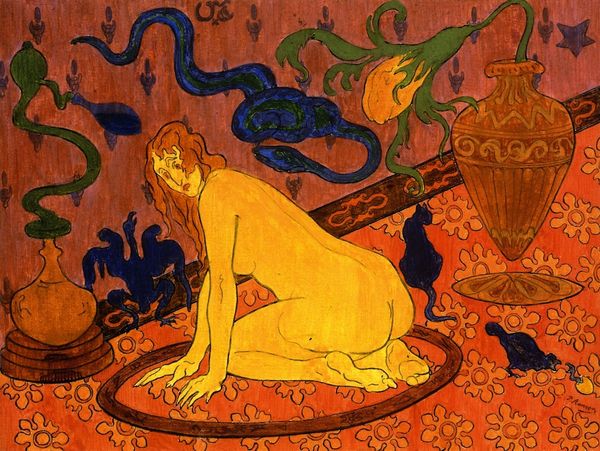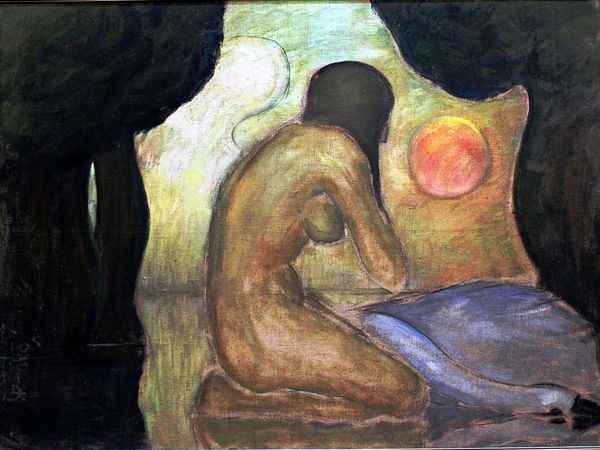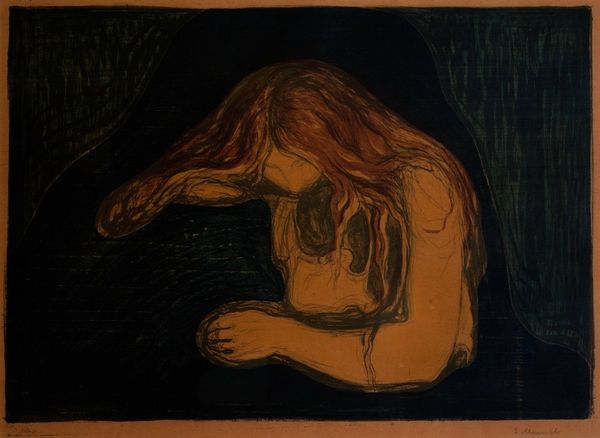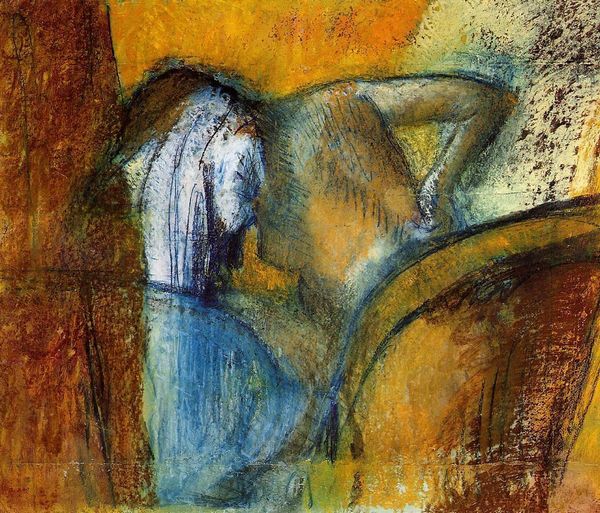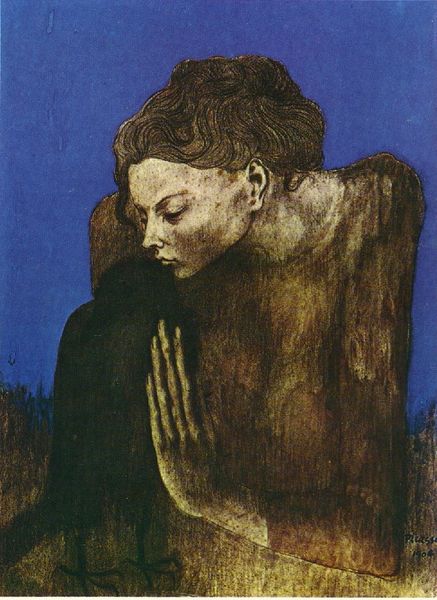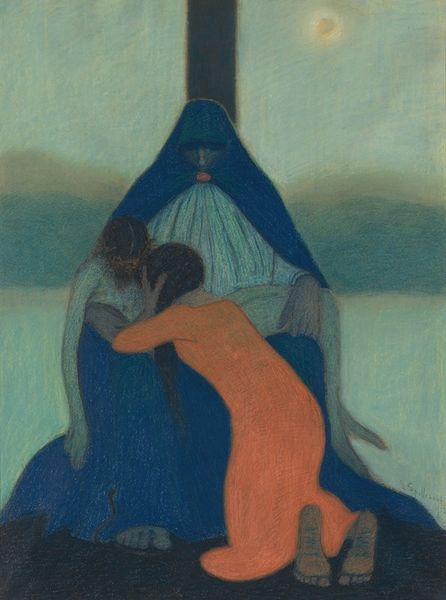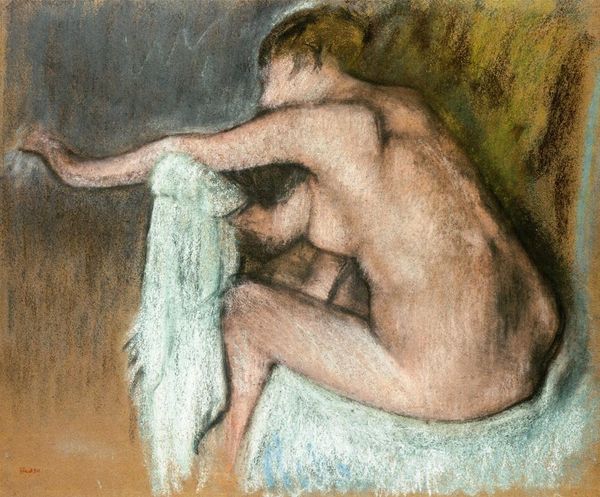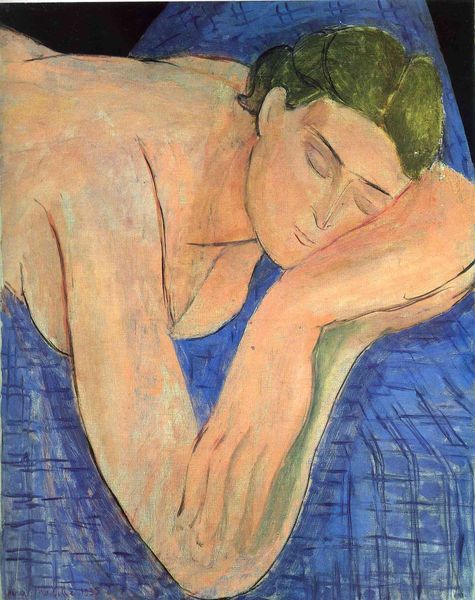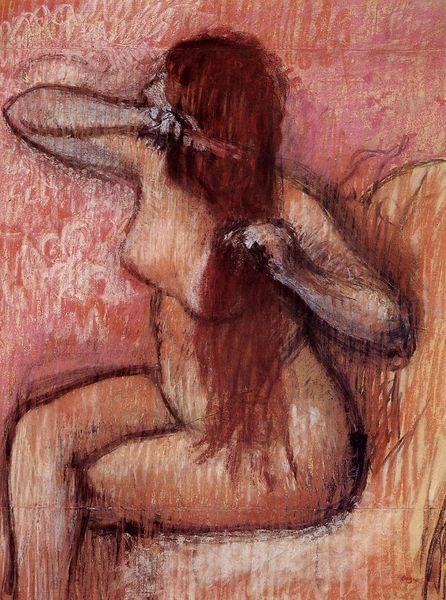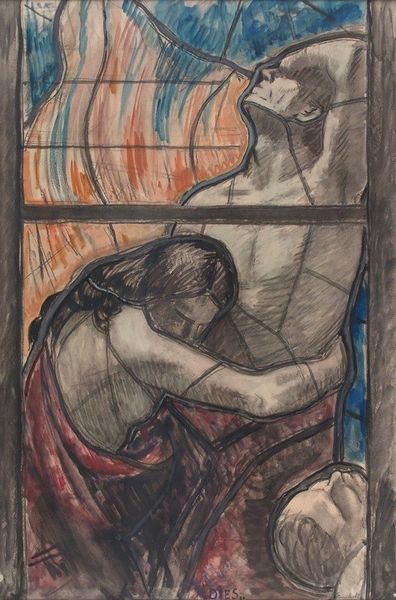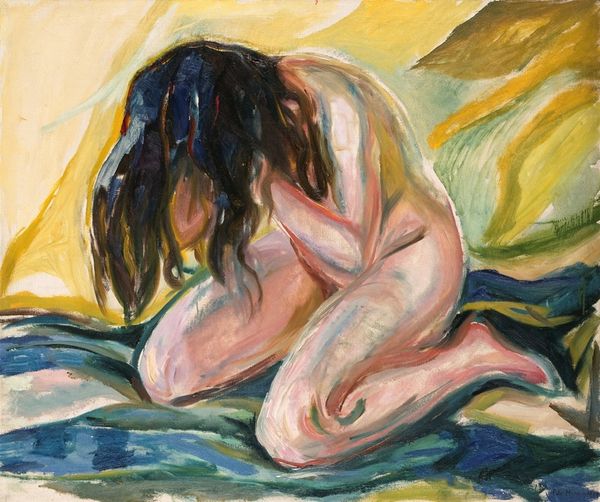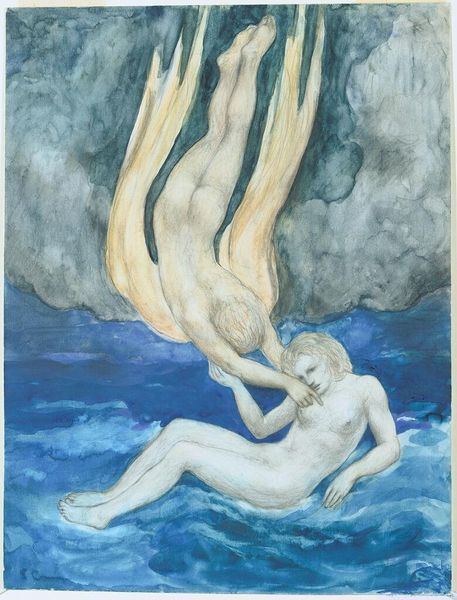
tempera, painting
#
abstract painting
#
allegory
#
tempera
#
painting
#
naive art
#
orientalism
#
symbolism
#
nude
Copyright: Public domain
Paul Ranson made this untitled painting sometime in the late 19th century. At first glance, the artwork may seem like a simple nude study, but its symbolism and arrangement suggest a deeper cultural context. The image juxtaposes a melancholic nude figure with a collection of symbols, including Egyptian motifs and stylized flora. This combination reflects the late 19th-century fascination with the exotic and the occult, a period when artists sought to challenge academic art traditions by drawing inspiration from non-Western cultures and esoteric philosophies. France, the country in which the artwork was made, was at that time consolidating its colonial empire, and interest in far-off lands was high. Ranson was part of the Nabis, a group of Post-Impressionist avant-garde artists who were interested in symbolism and spiritualism. They were questioning the prevailing artistic norms and institutions of their time by incorporating mystical and decorative elements into their work. Art historians delve into such cultural and institutional contexts, consulting period sources and critical literature, to uncover the rich layers of meaning embedded in artworks like this.
Comments
No comments
Be the first to comment and join the conversation on the ultimate creative platform.
